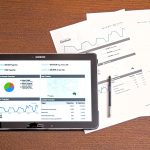In an increasingly competitive business landscape, operational efficiency has become a linchpin for success. Organizations that can deliver quality services and products promptly while optimizing costs often outpace their competitors. However, measuring operational efficiency is not a one-size-fits-all endeavor; it requires an in-depth understanding of critical metrics that reflect a company’s performance and potential for improvement. In this article, we explore essential metrics for assessing operational efficiency and strategies for effectively leveraging them.
The Importance of Operational Efficiency
Operational efficiency refers to the ability of an organization to deliver products or services to customers with minimal waste, expense, and effort. It encompasses a variety of variables, including resource allocation, process optimization, and workforce productivity. Companies that excel at operational efficiency not only reduce operational costs but also improve customer satisfaction, enhance employee morale, and foster innovation.
Key Metrics for Measuring Operational Efficiency
-
Productivity Rate
The productivity rate measures the output generated per unit of input. This can be calculated for individual employees, teams, or entire departments and may encompass various inputs such as time, labor, and materials. A higher productivity rate indicates a more efficient use of resources, while a lower rate suggests a need for improvement.
-
Cycle Time
Cycle time refers to the total time it takes to complete a process from beginning to end. This metric is crucial for identifying bottlenecks in production or service delivery. Reducing cycle time enhances operational efficiency, accelerates time-to-market, and improves customer satisfaction.
-
Throughput
Throughput measures the amount of product manufactured or service delivered within a specific timeframe. It provides insight into the production capacity and effectiveness of various processes. Maximizing throughput while maintaining quality assures that resources are being efficiently utilized to meet customer demands.
-
Overall Equipment Effectiveness (OEE)
OEE combines metrics for availability, performance, and quality to provide a comprehensive view of how effectively machinery and equipment are utilized. A high OEE score indicates that equipment is being used to its fullest potential, contributing significantly to operational efficiency.
-
Cost per Acquisition (CPA)
For many businesses, understanding the cost associated with acquiring new customers is essential for evaluating operational effectiveness. CPA measures the total expense incurred in obtaining a customer, including marketing and sales costs. Businesses that can optimize CPA while maintaining customer loyalty and satisfaction often see improved profitability.
-
Employee Efficiency
Employee efficiency is often gauged by evaluating hours worked against output produced. High-performing employees tend to benefit the organization through increased productivity and innovation. Engaging employees and providing continuous training can lead to enhanced efficiency and contribute to better overall operational outcomes.
-
Customer Satisfaction Index (CSI)
Customer satisfaction is a critical measure of operational efficiency. The CSI can be gauged through surveys, feedback forms, and Net Promoter Scores (NPS). Organizations with high customer satisfaction tend to retain clients longer, reducing acquisition costs and fostering brand loyalty.
Leveraging Metrics for Continuous Improvement
Measuring operational efficiency is not just about tracking performance; it’s about using these metrics to drive continuous improvement. Here are some strategies for leveraging these insights:
-
Data-Driven Decision Making
Start by establishing a culture of data-driven decision-making within the organization. Leaders should leverage real-time metrics to inform strategy and make adjustments as necessary, reinforcing the importance of operational efficiency at every level.
-
Benchmarking
Regularly benchmark your organization’s performance against industry standards and competitors. This can highlight areas for potential improvement and spark initiatives to innovate processes, ultimately driving operational efficiency.
-
Employee Engagement
Engage employees in discussions around efficiency metrics. Providing them with insight into how their roles impact overall efficiency can motivate them to strive for excellence and embrace a mindset of continuous improvement.
-
Regular Reviews
Implement regular performance reviews that focus on the identified metrics. These reviews should not only assess current performance but also develop strategic recommendations for improvements.
-
Adopting Technology
Embrace technology that facilitates the collection and analysis of operational metrics. Tools, such as Business Intelligence (BI) software or Enterprise Resource Planning (ERP) systems, can streamline analysis and reporting, allowing for quicker decision-making.
Conclusion
Understanding and measuring key metrics for operational efficiency is critical for organizations striving to thrive in today’s market. By focusing on metrics like productivity rate, cycle time, throughput, OEE, CPA, employee efficiency, and customer satisfaction, leaders can identify opportunities for improvement, optimize resources, and ultimately enhance overall performance. The journey toward operational efficiency takes time and commitment, but the rewards – increased competitiveness, customer loyalty, and profitability – are well worth the effort.




